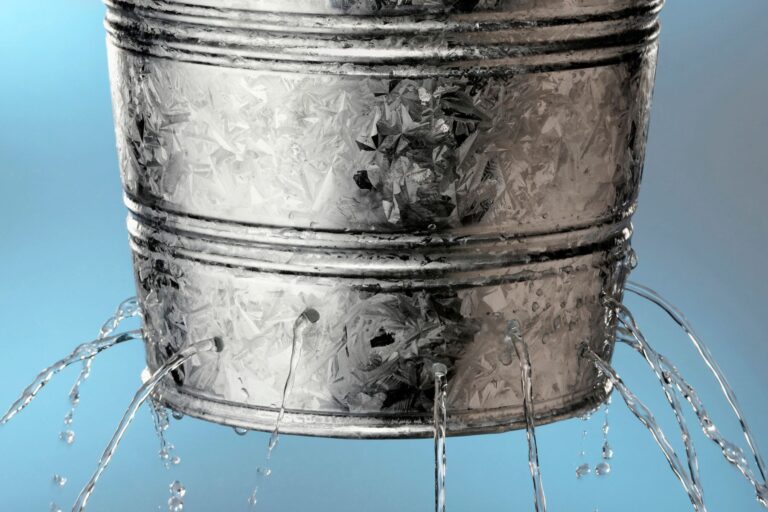Aside from sales, perhaps the single-most important strategic metric for revenue teams is the sales pipeline. It’s the representation of where leads reside in your selling processes. The sales pipeline allows revenue teams to draw conclusions and forecast upcoming revenue. And, as a result, it provides a snapshot of the relative health of your business.
Your sales pipeline is an aggregate total of the potential deals you have in the works. However, it’s important to learn from the pipeline, in aggregate, to address each individual potential deal and facilitate it towards closed/won.
In this post, we’ll cover the managerial metrics that will help your team maximize your sales pipeline.
Building an Accurate Sales Pipeline
Before you can use managerial metrics to improve your revenue team results, you have to develop an accurate sales pipeline. While there are a few methodologies to use, it’s important to remain consistent and approach accuracy with a steadfast commitment.
At LeanData, Opportunities are created in Salesforce only after a Sales Development Representative (SDR) has engaged with a prospect and ascertained that a potential deal exists. At that time, the Opportunity is entered into the system with a value of zero dollars. We avoid using “placeholder” amounts since we don’t want to artificially — and inaccurately — inflate the pipeline. We want to have an Account Executive (AE) validate the Opportunity and ascertain the potential value as part of the discovery process during the first call.
Thus, once an Opportunity is created, the SDR then passes the prospective lead onto an AE, who then enters into a qualifying conversation with the lead. Only if/when the AE qualifies that there is indeed an Opportunity will a dollar amount be attached to the record.
The upside to this process is that the sales pipeline is much more accurate with the absence of any placeholders. Additionally, the total amount of the required sales pipeline needed to hit our revenue goals is a lower number.
The Downside: More Pressure on Demand Gen Team
Alas, for every upside there tends to be a corresponding downside. In this case, for this methodology, the total pipeline number is lower and therefore puts more pressure on the Demand Generation team to get leads and their Opportunities into the pipeline. There’s also much less room for error because the multiplier between required pipeline and the corporate revenue objective is lower.
Once your sales pipeline has been created, your Operations, Marketing and Sales leaders will want to examine it on a regular basis. Most organizations will look at it daily. Marketing leaders will want to ensure there is a steady volume of opportunities getting created. Sales Development leaders will want to make certain those $0 early stage deals have their first meeting and get an amount assigned. Sales leaders will want to make sure deals are not stagnating. Finally, Operations teams will want to ensure the orchestration of movement is executing without hiccups.
Routinely analyzing your sales pipeline provides insights into how Opportunities are progressing and where in your sales processes deals are being held up. Additionally, slicing and dicing current and historical data helps identify opportunities for improvement. You’re then empowered to push and pull upon your managerial levers to affect the results you want accomplished.
Four managerial metrics to maximize your sales pipeline
Metric #1 – Win Rate (Qualified Leads to Sales ratio)
Your Win Rate is the percentage of the number of qualified deals in your pipeline that progress to closed/won. It is calculated as:

The Win Rate is a useful metric for several reasons. First, Win Rate offers insights into how much pipeline is required to meet quotas and revenue goals. For instance, if the average Win Rate is 40 percent and you have a quota or goal of $1 million, you’ll need a pipeline of at least $2.5 million ($1 million/0.40) to reach or exceed objectives.
Additionally, evaluating Win Rate across your Sales team and across market segments is helpful. Determine common denominators of what’s working and what’s not, and coach up your reps to lift those Win Rates.
Metric #2 – Average Deal Size
The Average Deal Size is the average amount of revenue generated by the closed/won deals over a specified period of time. The calculation is:

Comparing Average Deal Size among individual deals and reps can identify opportunities for improvement and coachable moments. If reps in similar markets with similar products, services and solutions have significantly different Average Deal Sizes, strive to understand the key factors driving the difference.
In evaluating deals, look for the contributing causes of one deal being significantly higher or lower than other deals or the average. Determine the leading causes of the bigger deals and look to replicate them going forward.
Metric #3 – Sales Cycle
The Sales Cycle is the number of days on average it takes for a prospective deal to reach closed/won, and it’s valuable in developing your sales forecast. Its equation is as follows:

Your Sales Cycle provides insights into how much time and resources are needed, on average, to win a deal. You can also striate the Sales Cycle into stages, and use historical data to determine where current Opportunities should be and how much time they should take to advance through each stage on the way to closed/won.
Metric #4 – Sales Velocity
Sales Velocity is the speed at which an Opportunity moves through your sales pipeline to a closed/won result. It is calculated using the metrics above:

Sales Velocity tells you the rate at which your team is generating revenue. Determining the speed that leads are moving through your sales pipeline helps identify where your sales process is excelling and where deals tend to stall.
Your Sales Velocity provides an indication of the strength of your business and the relevance of your value proposition to leads. The quicker you turn leads into customers, the better your cash flow and the healthier your business.
Whenever you change your sales processes, be certain to keep an eye on your Sales Velocity. Everything else being equal – average deal size, etc. – process changes should quicken your Sales Velocity, not elongate it. Additionally, you can use Sales Velocity as a determinant to the impact external factors might have on your business (e.g., inflation, currency fluctuations, etc.).
Note the calculation of Sales Velocity. As a sales leader, you’re interested in increasing Sales Velocity, but to do so, you need to address the multiple inputs into the calculation. Improve upon the number of opportunities, Win Rate, Average Deal Size and/or Sales Cycle to affect your Sales Velocity.
Rely on Metrics to Maximize Your Sales Pipeline
The old adage is “you get what you measure.” A key measure for all revenue teams is the sales pipeline. And, without a sales pipeline, you’re not going to get revenue.
But, don’t stop at just measuring the amount of your pipeline, comparing it to measurements in previous months, quarters or years. Use the metrics above to:
- Identify any Opportunities at risk
- Discover best practices from your biggest deals to deploy across your entire sales pipeline
- Improve the performance of your sales people with easy-to-follow metrics and coaching for development
- Improve the accuracy of your sales forecast
Good luck in scaling your growth!










